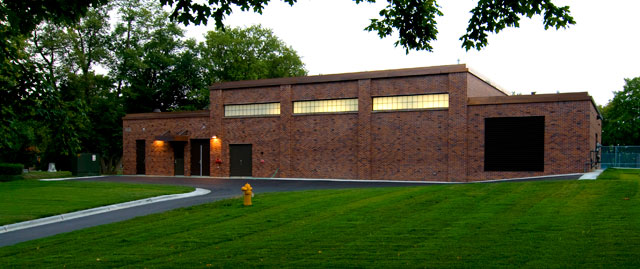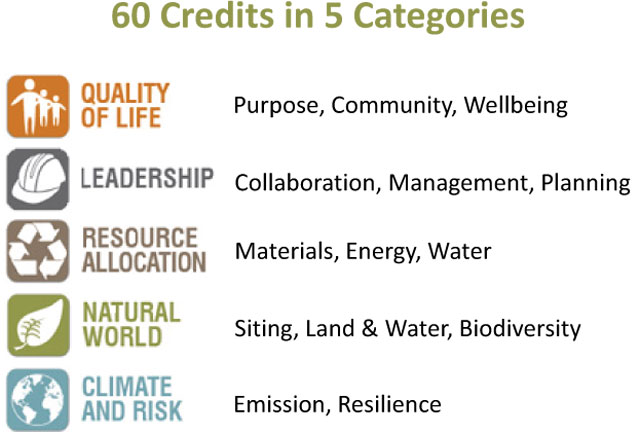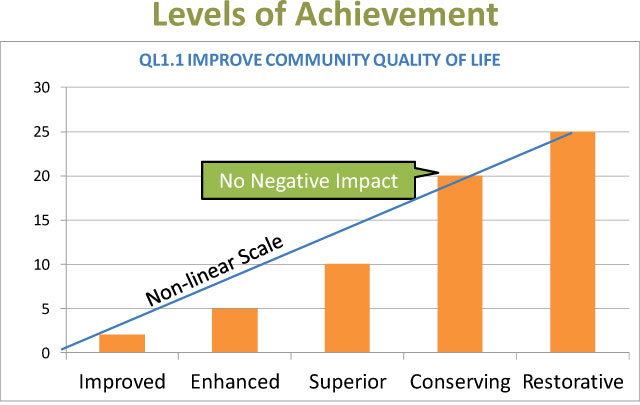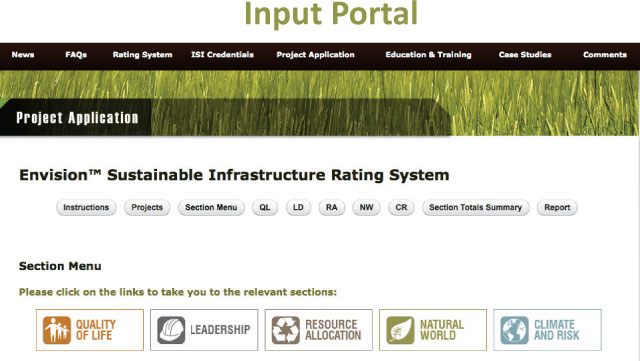One of the most important responsibilities our cities have is to build and maintain public infrastructure. The private sector invests in reliance on this public investment and together we build diverse communities, supporting a high quality of life for our citizens.
In the Urban Land Institute’s publication Infrastructure 2014 – Shaping the Competitive City, 250 public sector leaders in local and regional government and 200 senior-level private developers were surveyed. The quality of infrastructure was the top ranked factor by both groups when identifying drivers of real estate investments.
Cities face multiple challenges when building and maintaining infrastructure. It is often said that it is hard enough to garner public support for the revenues needed to maintain existing infrastructure, let alone pay for the more resilient, multi-purpose infrastructure needed to support prosperous and healthy cities in the future. While never an easy process, there are several resources and an upcoming training session that can help you inform and engage your community in making more cost-effective and sustainable investment decisions.
Every city is unique and each faces its own distinct set of problems and opportunities. It is easy for a small community to look at examples of improvements in major urban centers and conclude that they can’t play in that league. While it is true that very expensive examples may be beyond their reach, they could still benefit as much or more from thinking more broadly about their infrastructure investments.

The City of Wayzata’s new water treatment plant incorporates peak shaving strategies to significantly reduce energy consumption and water recycling technology to reduce the amount of discharged grey water by 90%.
The May/June Minnesota Cities magazine included an article on complete streets. This was a great example of tailored solutions to community context and needs. The article referenced a range of examples from Maplewood to Duluth. In Maplewood the community chose to narrow streets, to make room for sidewalks and rain gardens. In Duluth the City is combining complete streets infrastructure with the conversion of its steam heating system into a new closed hot water district heating system. Both communities have found ways to improve the efficiency of their investments and realize a broader set of community objectives.
Sometimes city leaders and their advisors turn off to new approaches because they perceive them as an indictment of their past decision making, or a failure to recognize and respect all of the improvements they have already made. Instead, these new programs invite communities to consider investment decisions more broadly and sometimes that will lead to additional benefits.
Resources to support community engagement
Effective community engagement starts with information. Two Minnesota based programs and one relatively new national rating system is available to support your community conversations. All of these tools are voluntary and none of them commit the city to any specific decision or outcome. They simply help you think more broadly and longer term when you consider your choices.
Minnesota GreenStep Cities is a free, voluntary program that is based on 28 best practices. All of the best practices are focused on cost savings, energy use reduction and civic engagement. Cities explore the implementation of each practice at a 1, 2, or 3 star level, choosing among a list of four to eight actions. To date there are 83 diverse Minnesota cities throughout the State that are engaged in this continuous improvement program.
The Regional Indicators Initiative is a program sponsored by the Regional Council of Mayors (RCM) Healthy & Resilient Communities Committee. At last count 30 Minnesota cities have signed on to support the collection of data related to the activities of the people who live, work, travel, visit and recreate within their boundaries.
The regional indicators are energy (in BTUs), potable water consumed, waste in pounds (including landfilling, recycling, composting and combustion) and travel (in vehicle miles traveled). All of the data associated with each of the indicators is converted into greenhouse gas emissions and they are broken down into residential and commercial/industrial uses and presented in terms of per capita and per job. This is especially helpful because our Minnesota cities vary widely due to the nature of their local economies. The data establishes a baseline for planning for sustainability and the pursuit of strategies and practices to save money and energy.
Like the more familiar LEED rating system, the Envision Rating System can result in official verification and certification for specific projects at a Bronze, Silver, Gold or Platinum level. This may be important to some cities, but the real benefit to this system is that it provides a broader framework for community engagement in the decision-making process. Participants are supported in evaluating questions that incorporate Quality of Life, Leadership, Resource Allocation, Natural World and Climate and Risk. Again, the rating system doesn’t favor specific choices and it assumes that individual circumstances will vary widely. Even the projects that attain the Platinum level are only required to achieve 50% of the points.


To begin the evaluation the group simply clicks on the selected category on the Input Portal as shown. This portal walks the participants through a series of questions with some criteria to use in determining the score for the project’s attainment level for each question. When all of the individual question scores have been determined they are added up to determine the attainment level for that category. When all of the scores for all five categories have been added up they determine the overall level of achievement for the project.

The Envision System identifies five increasingly sustainable levels of achievement. This starts with Improved, which is a modest step up from meeting minimum standards. It proceeds through Enhanced, and Superior to the Conserving level which is identified as the point at which the project essentially does no harm. The highest level and the ultimate goal of the system is the Restorative level. At this level the project has achieved a score for all of the five categories of assessment to be judged as reversing past degradation.
The Envision system is pretty new to Minnesota and there are not yet many projects that have used the system. The City of Edina plans to use it to complete an after the fact evaluation a major project to evaluate how it might have changed their decisions. Depending on their findings they will decide whether to incorporate this evaluation in other major projects.
At a national and international level the Envision system has been used to significantly improve decision making about a county-wide Green infrastructure and Low Impact Development (GI/LID) manual in the desert environment of Pima County, Arizona. It also led to innovation in South Los Angeles where the system led to the decision to clean up nearby brownfields and use urban storm water to restore wetlands, while increasing public access to urban open space. In urban settings the system has led to an abundance of diverse complete streets approaches, as well as new mixed use developments, increased community engagement, place-making, increased transit ridership and greatly improved energy and water conservation.
In addition to normal municipal infrastructure projects, the Envision system is equally well suited and has been used to guide major energy, water and waste management, transportation and information systems projects. My company, Stantec, has over 100 professionals who have completed the training and are certified to use the Envision Rating System. We are joined by many other planning, architecture and engineering firms that are committed to expanding the use of this new tool on across a wide spectrum of project types.
Upcoming Training Opportunity
Communities located within the seven county Twin Cities Metropolitan Area are aware that the Metropolitan Council will be sending out systems statements this fall to every local government to start the planning process for the next mandatory round of comprehensive planning under the Metropolitan Land Planning Act.
Because of the recent recession many of the Metro communities have not experienced much land use change since the adoption of their current comprehensive plan. As a result, many of these communities are thinking about their next plan as a rather minor update. From a traditional growth management perspective it may be, but there are numerous other changes that have occurred and new challenges to be planned for. These include demographic changes, shifting housing demand, multiple water issues, alternative energy systems, and transit oriented development to name just a few.
A program sponsored by GTS Educational Events is scheduled for October 28. It will cover the basic requirements for the next round of planning, but focus on connecting the participants with new information and resources and offer breakout sessions offering more in depth opportunities to learn about key topics. You can learn more or register for that event now!
In summary, there are numerous ways in which cities across Minnesota and across the world are implementing innovative infrastructure projects. New resources and programs are available to help your city explore a broader set of opportunities and engage your citizens in constructive and creative ways. Metro communities should plan to take full advantage of the GTS program in October and get prepared to engage in comprehensive planning effort quite different from any they have done before.
You can also download a copy of the presentation I gave at the 2015 League of Minnesota Cities Conference on these sustainable infrastructure topics.
About the Author: John Shardlow is a Senior Principle at Stantec. The author has assisted over 100 Minnesota cities in a broad range of community planning projects. He is the Past Chair of the ULI Sustainable Development Council, The Co-Chair of the Regional Council of Mayors Healthy & Resilient Communities Committee and is a certified Envision Rating System evaluator by the Institute for Sustainable Infrastructure.
About the Local Government Energy Action Series:
This effort tells the stories of Minnesota municipalities, counties, and schools and the tangible results of their energy-saving efforts to inspire others to take their own actions.


